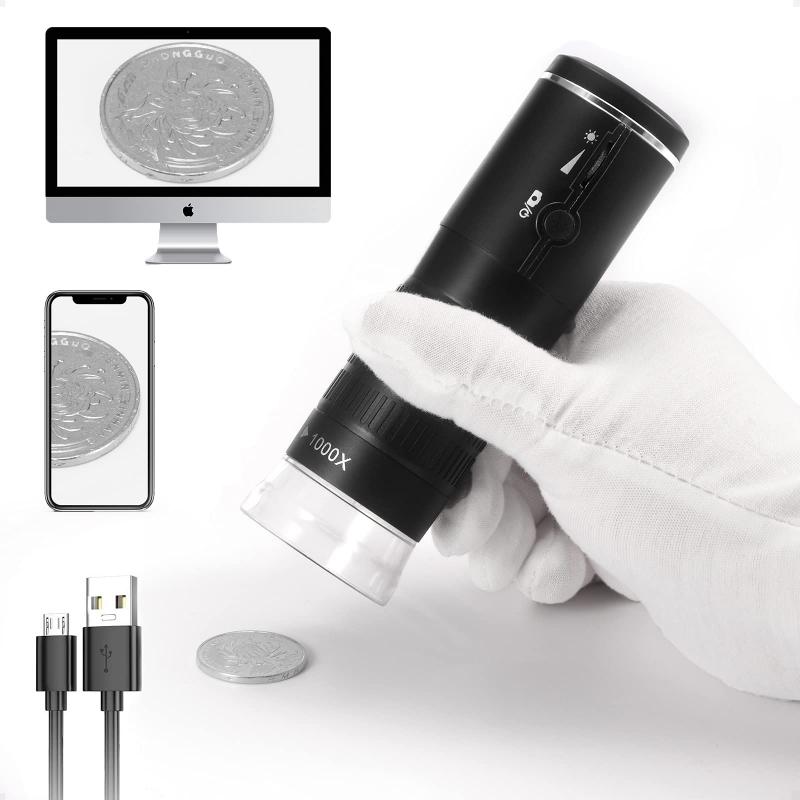What Does Alcohol Look Like Under A Microscope ?
Under a microscope, alcohol appears as a clear liquid with no visible particles or structures. This is because alcohol is a pure substance composed of molecules that are too small to be seen with a light microscope. However, if the alcohol is mixed with other substances, such as water or impurities, these may be visible under the microscope. Additionally, if the alcohol is frozen, it may form crystals that can be seen under a microscope. Overall, the appearance of alcohol under a microscope depends on its purity and any other substances it may be mixed with.
1、 Alcohol Crystals
Alcohol crystals are the solid form of alcohol that can be observed under a microscope. When alcohol is cooled to a certain temperature, it forms crystals that are visible under a microscope. These crystals are typically colorless and have a regular geometric shape.
Under a microscope, alcohol crystals appear as small, uniform, and tightly packed structures. They are composed of molecules of ethanol, the primary component of alcohol, which are arranged in a repeating pattern. The crystals are typically less than a millimeter in size and can be observed using a standard light microscope.
Recent studies have shown that alcohol crystals can have different shapes and sizes depending on the type of alcohol and the conditions under which they are formed. For example, the crystals of ethanol are typically smaller and more uniform than those of methanol, which can be larger and more irregular in shape.
In addition to their appearance under a microscope, alcohol crystals have important physical and chemical properties that are relevant to their use in various applications. For example, the size and shape of the crystals can affect their solubility and reactivity, which can impact their use in the production of pharmaceuticals, fuels, and other products.
Overall, the study of alcohol crystals under a microscope provides valuable insights into the properties and behavior of this important substance.

2、 Alcohol Molecules
Alcohol molecules can be observed under a microscope, and they appear as small, colorless, and transparent structures. The molecular structure of alcohol consists of carbon, hydrogen, and oxygen atoms, which are arranged in a specific pattern. The arrangement of these atoms gives alcohol its unique properties, such as its ability to dissolve in water and its flammability.
Recent advancements in microscopy techniques have allowed scientists to observe alcohol molecules in greater detail. For example, high-resolution electron microscopy can provide a detailed view of the molecular structure of alcohol. This technique uses a beam of electrons to create an image of the sample, allowing scientists to observe the individual atoms that make up the molecule.
In addition to observing the molecular structure of alcohol, scientists are also interested in studying how alcohol interacts with other molecules in the body. For example, researchers have used microscopy techniques to study the effects of alcohol on brain cells. These studies have shown that alcohol can disrupt the structure and function of brain cells, which can lead to a range of neurological disorders.
Overall, microscopy techniques have provided valuable insights into the molecular structure and effects of alcohol. By studying alcohol at the molecular level, scientists can better understand its properties and develop new treatments for alcohol-related disorders.

3、 Alcohol Clusters
Alcohol clusters are groups of alcohol molecules that form when alcohol is exposed to air. These clusters can be seen under a microscope as small, spherical shapes. The exact appearance of alcohol clusters can vary depending on the type of alcohol and the conditions under which they are formed.
Recent research has shed new light on the structure of alcohol clusters. Using advanced imaging techniques, scientists have been able to observe the behavior of individual alcohol molecules within these clusters. They have found that the molecules are constantly moving and interacting with one another, forming complex networks of hydrogen bonds.
One of the most interesting findings from this research is that the structure of alcohol clusters can have a significant impact on the properties of the alcohol itself. For example, clusters of ethanol molecules have been shown to have different physical and chemical properties than individual ethanol molecules. This has important implications for the use of alcohol in various applications, from fuel production to pharmaceuticals.
Overall, the study of alcohol clusters is an active area of research that is yielding new insights into the behavior of alcohol at the molecular level. By understanding the structure and properties of these clusters, scientists may be able to develop new and more effective ways to use alcohol in a variety of applications.

4、 Alcohol Aggregates
Alcohol aggregates are clusters of alcohol molecules that form when alcohol is viewed under a microscope. These aggregates can vary in size and shape depending on the type of alcohol and the conditions under which they are viewed.
Recent studies have shown that alcohol aggregates can have a significant impact on the physical properties of alcohol, such as its viscosity and surface tension. This is because the aggregates can create a network of intermolecular bonds that affect the way the alcohol interacts with other substances.
Under a microscope, alcohol aggregates can appear as irregularly shaped clusters with varying degrees of transparency. The size of the aggregates can range from a few nanometers to several micrometers, depending on the concentration of alcohol and the temperature at which it is viewed.
It is important to note that while alcohol aggregates can provide insight into the physical properties of alcohol, they do not necessarily reflect the way alcohol behaves in the human body. The effects of alcohol on the body are complex and multifaceted, and are influenced by a variety of factors such as genetics, metabolism, and overall health.
In conclusion, alcohol aggregates are clusters of alcohol molecules that form when viewed under a microscope. They can provide insight into the physical properties of alcohol, but do not necessarily reflect the way alcohol behaves in the human body.







































